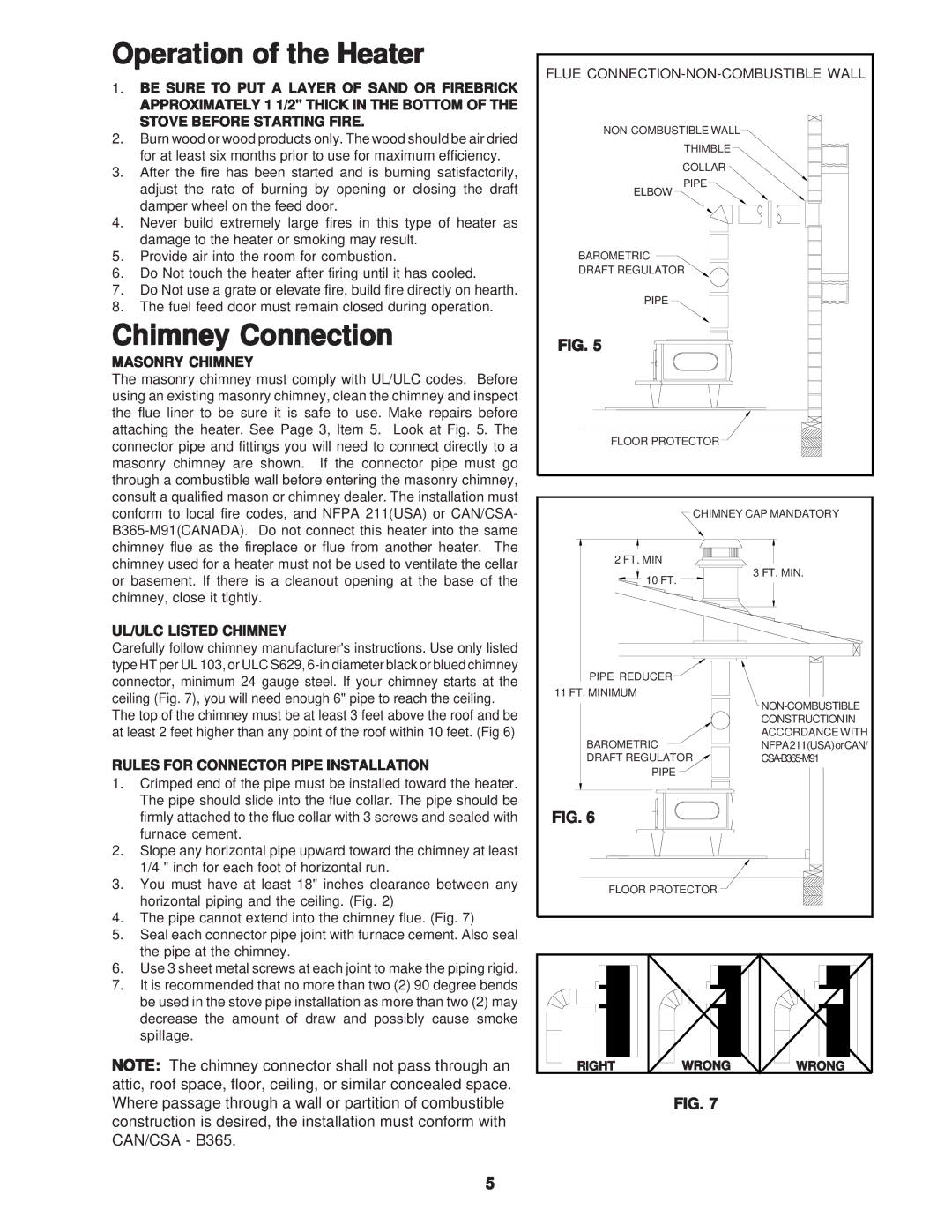C226 specifications
The United States Stove C226 is a striking combination of efficiency, performance, and style, making it an ideal choice for homeowners who seek reliable heating solutions. This wood and coal burning stove is engineered to provide substantial warmth while emphasizing ease of use and durability.One of the main features of the C226 is its robust construction. Manufactured from heavy-duty cast iron and steel, this stove boasts exceptional durability and heat retention, ensuring that it can withstand even the most intense usage. The C226 is designed to handle a wide variety of wood sizes, accommodating logs up to 18 inches, and it is perfect for both rural and urban settings alike.
The C226 incorporates an ingenious technology known as "air wash" that helps keep the glass door clean for optimal viewing of the flickering flames. This feature reduces the buildup of creosote and soot, enhancing not only the aesthetic appeal but also the safety and efficiency of the stove.
Moreover, the stove's efficient combustion technology is designed to maximize heat output while minimizing emissions. This results in a cleaner burn, which is crucial for maintaining indoor air quality and for adhering to environmental regulations. The C226 also employs an easy-to-use damper that allows for precise control of the air supply, giving users the ability to fine-tune the burn rate according to their heating needs.
The design of the C226 includes a sizable firebox, which contributes to its long burn time. With a heat output rating capable of warming areas of up to 1,500 square feet, it is perfect for medium-sized homes and spaces. The stylish appearance, with its classic black finish and contoured edges, means it fits seamlessly into various interior decors.
Additionally, the C226 features a variety of installation options, compatible with both chimney and venting systems. The versatility of this stove makes it a popular choice among those looking to enhance their home’s heating capabilities while also enjoying the ambiance of a natural fire.
Overall, the United States Stove C226 stands out as a reliable and efficient heating solution. With its solid construction, user-friendly features, and environmentally-friendly performance, it exemplifies what a high-quality wood and coal stove should offer for today’s energy-conscious homeowners.

